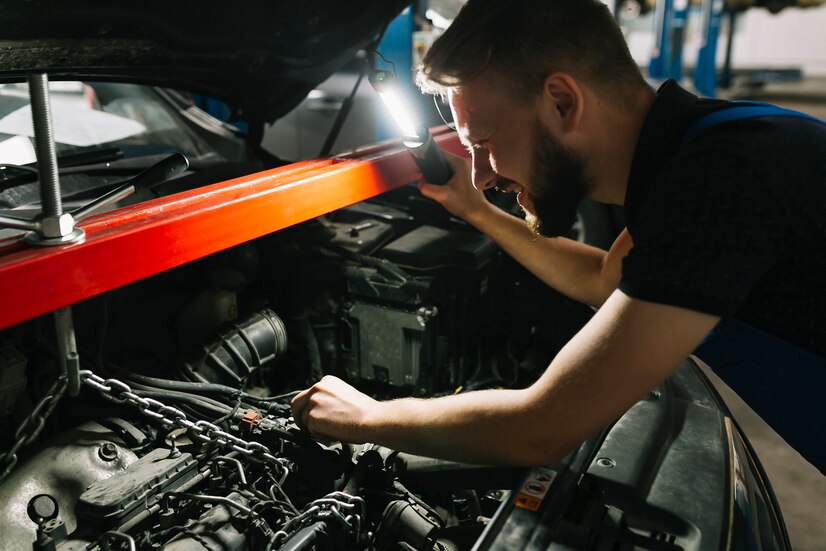The dreaded check engine light – it can illuminate on your dashboard like a digital Grim Reaper, sending shivers down the spine of even the most seasoned drivers. But fear not! While the check engine light can signal a potential problem, it doesn’t have to spell doom for your car.
This blog is your guide to understanding this enigmatic light, deciphering its meaning, and taking the necessary steps to get your car back on track.
Illuminating the Issue: Why the Check Engine Light Comes On
Modern vehicles are equipped with a complex network of sensors that monitor various engine functions, emissions systems, and performance parameters. When one of these sensors detects an abnormality, it triggers the check engine light, essentially acting as a malfunction indicator lamp (MIL).
The cause of the illuminated light can vary widely, ranging from minor issues like a loose gas cap to more serious problems like faulty oxygen sensors or catalytic converter malfunctions.

Understanding the Light’s Language: Different Types and What They Mean
There are two main ways a check engine light can behave:
1. Steady Illumination: This typically indicates a less severe issue that requires attention but may not cause immediate driving problems. However, it’s crucial to address it to prevent potential future damage.
2. Flashing Illumination: This signifies a more serious problem that could lead to engine damage or increased emissions. In such cases, it’s essential to pull over safely and seek professional help immediately.
While the check engine light itself doesn’t provide a specific diagnosis, some modern vehicles offer additional information on the dashboard display. However, for a definitive answer, you’ll need to employ some additional tools.
Decoding the Problem: Diagnostic Tools and Next Steps
Here’s how to get to the bottom of the check engine light mystery:
1. OBD-II Scanner: Most vehicles manufactured after 1996 are equipped with an On-Board Diagnostic (OBD-II) system. An OBD-II scanner, a readily available tool or phone app, can retrieve diagnostic trouble codes (DTCs) stored by the car’s computer. These codes point towards the specific area causing the problem.
2. Consult a Mechanic: Armed with the DTCs or simply the check engine light itself, a qualified mechanic can use specialized tools and their expertise to diagnose the issue accurately and recommend the necessary repairs.
Taking Action: Common Causes and Solutions
While the specific cause can vary depending on your vehicle, here are some common reasons behind a check engine light and their solutions:
1. Loose or Faulty Gas Cap: This is a simple fix. Tighten the gas cap or replace it if faulty.
2. Faulty Spark Plugs or Ignition Coils: Worn-out spark plugs can cause misfires and illuminate the light. Replacing them can resolve the issue.
3. Sensor Malfunction: Various sensors monitor engine performance. A faulty sensor can trigger the light. A mechanic can diagnose and replace the faulty sensor.
3. Emissions System Issues: Problems with the catalytic converter, oxygen sensors, or other emissions control components can cause the light to come on. Repairs or replacements might be necessary.
Prevention is Key: Maintaining a Healthy Engine
The best way to avoid the stress of a check engine light is through preventative maintenance. Here are some tips:
1. Regular Oil Changes: Clean oil keeps your engine lubricated and running smoothly, reducing the risk of problems.
2. Scheduled Maintenance: Follow your car’s recommended maintenance schedule for inspections, tune-ups, and replacement of worn-out parts.
3. Quality Parts: When replacing parts, use high-quality components to ensure optimal performance and longevity.
The Check Engine Light: Your Car’s Communication Tool
The check engine light, while seemingly ominous, is actually a valuable communication tool from your car. By understanding its purpose, using diagnostic tools, and taking necessary actions, you can ensure a healthy engine and avoid costly repairs down the road. Remember, a little knowledge goes a long way in keeping your car running smoothly and safely.

